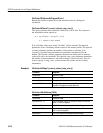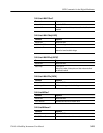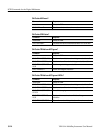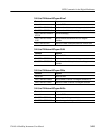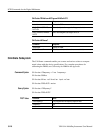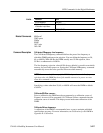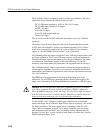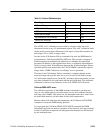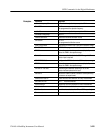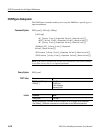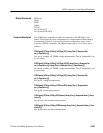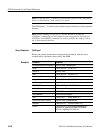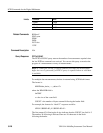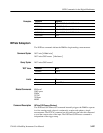
SCPI Commands for the Digital Multimeter
3–220
VX4101A MultiPaq Instrument User Manual
NOTE. You must issue the CALibrate:SOURce INT command before autozero will
work.
If data sampling is in progress, issuing a CALibrate:ZERO:AUTO ONCE
command will abort the acquisition.
If you program CALibrate:ZERO:AUTO ON, the DMM performs an autozero
operation each time it receives a MEASure?, READ? or INITiate command prior
to the first measurement, and whenever a measurement is taken which changes
either the current function, or the current range. For example, if autoranging and
autozeroing were enabled, issuing a MEASure? command would cause the
DMM to first seek the appropriate range for the input, and once found, perform
an autozero. If the range changes during the measurement process, the DMM
performs an autozero operation automatically on the new range. The autozero
routine uses the same aperture time as the measurement currently being taken.
For example, if the current function were programmed to a 0.5 second aperture,
the autozero routine will incur approximately 0.5 seconds of overhead each time
it is invoked.
If CALibrate:ZERO:AUTO OFF is programmed, autozeroing is disabled.
NOTE. The autozero setup is valid for all functions and ranges of the DMM. That
is, the autozeroing cannot be individually programmed for each function. Also
the autozero values are not stored in nonvolatile memory. The calibration
procedure of the DMM includes commands to calculate and store calibrated
base offset values.
CALibrate:LFRequency?
Returns the rejection frequency value stored in nonvolatile memory.
CALibrate:SOURce?
Returns the calibration source, either EXT or INT.
CALibrate:ZERO:AUTO?
Returns a zero or a one, depending on whether you have enable autozeroing. The
values are:
0=disabled, OFF
1=enabled, ON
Query Response



